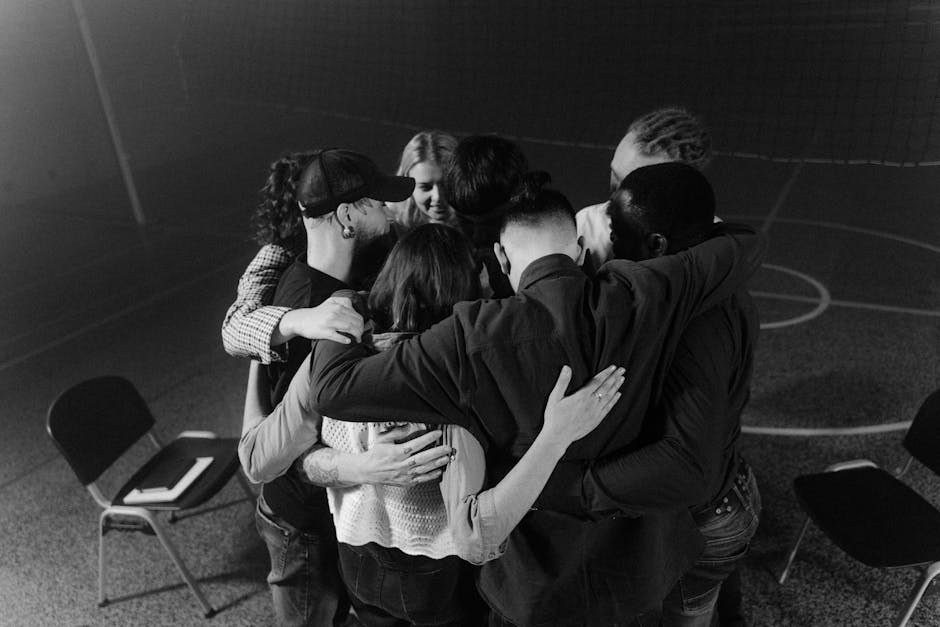Curiosity about arrangement dating often starts with a simple question: what does the role involve, and how do you navigate it well? This guide reframes the basics, lays out realistic expectations, and shows practical ways to approach boundaries, money, privacy, and day-to-day life – all while keeping the dynamic clear and mutually agreed. If you’re weighing the idea seriously, take your time and read carefully. The choices you make at the start will shape every part of the experience.
The role, in plain terms
A sugar baby is someone who seeks a companionable arrangement – typically with an older, financially established partner – in exchange for presence, connection, and clearly negotiated support. It may be easy to label the role with stereotypes, but real arrangements are more nuanced: some are light and social, others focused on mentoring and travel, and a handful evolve into long-term companionship built on trust. What matters most is clarity – both people understand what is being offered and what is being received.
This dynamic can be emotionally warm without promising forever. It can also be strictly companionship-based, intimate, or somewhere in between. The healthiest arrangements begin with transparency and continue with consistent communication about expectations and boundaries.

Reality check – common patterns you should know
There are recurring patterns in this world, and seeing them up front helps you set expectations. Average monthly support can land around $2,800, though location and lifestyle influence both higher and lower figures. Many arrangements are brief – often 2-3 months – and that brevity is not necessarily a failure; short, well-defined agreements can be successful if they serve both parties’ needs. Safety considerations are non-negotiable: scams exist, and the wrong match can be emotionally taxing. Additionally, age dynamics matter in how people perceive fit; many consider age 20 a sweet spot for entering this space, though people older than that engage successfully too.
These are broad tendencies, not rules. The point is to avoid magical thinking. Understand the range, weigh your limits, and build from there with intent.
Why people choose this path
Motivations vary, but most fall into a few categories. Some are aiming to reduce financial pressure – tuition, rent, or saving for a goal. Others genuinely prefer dating older partners, and an arrangement suits that preference while adding structure. Mentorship is another draw: a seasoned partner can offer guidance, feedback, and networking. Travel also features prominently – joining a partner on trips is a frequent perk when both schedules align.

Before you step in, pause to ask yourself: What’s the real reason you’re exploring this? If the answer is mainly lifestyle sparkle, acknowledge the trade-offs. You’re bargaining with time, energy, privacy, and sometimes emotion – make sure the exchange respects your self-worth.
What everyday life can look like
Daily rhythms vary, but a few patterns recur. You might accompany your partner to formal events and fundraisers – black-tie evenings where presentation matters. Travel can occur frequently or occasionally, from quick weekend escapes to longer itineraries. In public, you may be introduced as a date rather than as part of an arrangement – that’s common and, for many, preferable. Expect classic date activities – dinners, films, shows – with the quality dialed up. Physical intimacy is always situational and negotiated; some arrangements are strictly platonic, while others include sex by mutual choice. The key is consent and clearly stated terms – long before any expectation forms.
Money mechanics: how support is structured
Financial support is usually handled in two ways. One approach is a per-meet model: compensation is tied to each date, scaled to expectations – for example, platonic time may sit in the $50-$200 range; intimate time may be $200-$500; extended overnight plans can reach $300-$900. Another approach is an allowance – weekly or monthly support that reduces the transactional feel and keeps misunderstandings to a minimum. Gifts, dinners, and travel typically sit outside the allowance.

When deciding on an amount, build from actual needs rather than fantasy. List tuition/fees, books, rent, utilities, and a savings target – then discuss that number honestly. That grounded approach reads as integrity, not opportunism. Many people land in the $1,000-$5,000 range monthly, with a frequent band around $2,000-$3,000, and plenty request roughly $2,000-$2,500. Whatever you request should fit the life you’re pursuing and the time you’re offering.
Baseline requirements that help
Legal age is the floor – 18 or older. Beyond that, attraction matters, but it’s subjective; you don’t need to mirror an impossible standard so much as present your best. A lively personality goes far – conversation, wit, and ease in groups are tremendous assets at events. Availability also matters; a packed schedule frustrates both sides when spontaneity is part of the appeal. Finally, flexibility and a cooperative spirit help – while never sacrificing your boundaries. Think agreeable, not compliant – you set limits, then show up graciously within them.
Finding the right match
Approach the search like a strategist. Clarify relationship status preferences first: are you open to someone married who wants discretion, or do you prefer a single partner with ample free time? If you use mainstream apps, adjust filters to older, established age brackets and refresh your profile with elegant photos and a concise, confident bio. Dedicated platforms for arrangements exist as well, populated by people looking for this exact dynamic – vet thoroughly and stick to your criteria.
Referrals can be golden. If a trusted friend is in the scene, ask about introductions – it’s often safer. Outside apps, go where wealth gathers: higher-end bars and lounges, arts venues, galas, yacht or cigar clubs. Moving through those spaces with a friend can increase comfort and safety. Be persistent – some people connect on the first outing, others after several tries. Meanwhile, emphasize more than looks: your humor, perspective, and enthusiasm are differentiators that can matter more than a dress size.
Polish and presentation
Well-kept hair, neat nails, and a wardrobe that reads intentional rather than expensive signal care. You don’t need couture on day one – you need poise. Consider the venues your potential partner frequents – theatre, ballet, gallery openings, members-only casinos, or golf clubs – and meet the scene with understated sophistication. If you attend private functions, observe how people move, what they buy, and how they speak about art, travel, or philanthropy. This isn’t about pretending to be someone you’re not; it’s about learning the room, then letting your natural presence fit in.
Online presence done right
On specialized sites, craft a profile with sharp photos and a clear bio. Skip the selfies – have a friend help or invest in a simple shoot. Aim for sophisticated, warm, and precise . State your availability, your interests, and the kind of arrangement you prefer. Don’t wait passively for messages – browse, initiate, ask questions, and track who follows through. Patience is part of the process; some matches look promising but fizzle, and that’s fine. Keep standards steady and move on quickly when the fit is wrong.
Useful platforms to explore
- SugarDaddyMeet
- SugarDaddy.com
- SugarDaddie.com
- Secret Benefits
- SugarDaddyForMe
- MissTravel
- WhatsYourPrice
- AgeMatch
- RichMeetBeautiful
- EstablishedMen
- AshleyMadison
- AdultFriendFinder
- EliteSingles
Try more than one if you like – different communities have different cultures. Test, learn, and focus where you get traction.
Spotting fakes and avoiding traps
Bad actors exist – protect yourself. Ignore anyone demanding “loyalty” payments or fees up front. A person genuinely able to support you won’t ask you to wire money to “prove commitment.” Treat incoming funds with caution until they clear properly; don’t spend money that can be clawed back. Keep your early conversations on-platform, and don’t hand over personal details. Use an alias; share your last name later – if ever. Before any in-person meeting, schedule a video chat to confirm identity and vibe.
Privacy and safety, always
Keep communications traceable on the site, at least early on. Use separate contact details if you move off-platform. Meet first in public places you choose, alert a friend to your plans, and set check-ins. Consent is an ongoing conversation – you can revise terms anytime. If you feel pressured, disengage – there’s no perk worth compromising your gut feelings.
How to be genuinely good at the role
Think of this section as a concentrated playbook. Use it to build a strong foundation, reduce drama, and increase your odds of finding a match that feels respectful and rewarding.
- Keep emotion in perspective. Arrangements work best with low stress and clear boundaries. Avoid importing old relationship baggage – the goal is ease, not turmoil.
- Adopt a grounded mindset. Many partners want casual, low-pressure companionship. Enter accordingly – no illusions, no hidden ultimatums.
- Know your needs. Decide what you want – time, mentorship, tuition help, travel – and say it plainly.
- Define intimacy early. Whether you prefer a platonic arrangement or are open to sex, set that expectation up front so no one is misled.
- Have a target. Identify a purpose – clear a semester balance, seed a business, or build a down payment – and let that aim guide your decisions.
- Do not undersell yourself. Maintain values and limits. If someone tries to stretch your boundaries while shrinking support, decline.
- Invest in presentation. Fitness, grooming, and style reflect self-respect – they also help you feel confident in any room.
- Ignore the chorus. Outsiders will judge – they always do. Focus on your ethics and your agreement, not on opinions you didn’t ask for.
- Study your partner. Some crave conversation, others public company, others affection – learn what’s valued and meet it authentically.
- Ask directly. This is an exchange – specific requests beat vague hints. Clarity builds trust.
- Write the rules together. Decide cadence, meetups, and support on day one – then honor the plan. If payment stalls, treat it as a red flag.
- Show appreciation. Gratitude is not performative – it’s relational glue. Express it sincerely for time, gifts, and shared experiences.
- Guard your timeline. Trust develops by degrees. Don’t sprint – pace yourself emotionally and practically.
- Showcase your assets. Humor, empathy, insight, and ambition are attractive – amplify them alongside your looks.
- Embody culture and curiosity. Learn about art, music, and travel – even a basic grasp helps you navigate upscale spaces with ease.
- Be reachable. If you’re never available, the arrangement stalls. Align schedules and keep commitments.
- Set boundaries in writing. Duration, public vs. private time, meeting spots, frequency, support timing, and acceptable age gaps – decide and document.
- Take initiative. Don’t wait around on apps – message first, propose a time, and move the conversation toward a video call.
- Don’t assume limitless wealth. Many partners are comfortable, not billionaires. Target someone whose means align with your expectations.
- Watch your heart. Feelings can grow – keep a pulse on them and make choices that protect your long-term well-being.
- Avoid complacency. Show up polished and present – the dynamic is an exchange, not a set-and-forget situation.
- Be discreet. Discuss social media and photography expectations – then honor them. Privacy matters to both of you.
- Treat it like a relationship. Respect, consistency, and thoughtful attention apply here as much as anywhere.
- Stay self-reliant. Arrangements can end suddenly. Keep your own income pathways active so you’re never cornered.
- Tell the truth. Be honest about needs, schedules, and limits – candor is attractive and stabilizing.
- Leverage the upside. Mentorship, connections, and perspective can be as valuable as money – engage with all of it.
- Keep dating open. Unless you’ve agreed to exclusivity, you’re allowed to meet others – just be clear about how you’re operating.
Calculating support without drama
When you talk numbers, reference a budget – don’t rattle off a wish list. Share a simple breakdown: tuition/fees, books, rent, utilities, savings. Then offer a number that covers those essentials and fairly values your time. If you’re discussing per-meet rates instead, align the amount with the plan – a quick coffee chat isn’t an overnight, and vice versa. State that gifts and travel are separate from support so neither side confuses categories.
Meeting etiquette and discretion
First meets belong in comfortable, public spaces – hotel lobbies, upscale cafés, quiet lounges. Arrive on time, dress to the venue, and keep the conversation light but intentional. If the chemistry feels wrong, you can end gracefully and move on. Many partners prefer discretion – discuss what can be posted and what stays private. If they ask to be under the radar, decide whether that aligns with your comfort.
Handling mismatches
Not every conversation warrants a date, and not every date warrants a second. If someone pushes boundaries, becomes inconsistent with payment, or speaks disrespectfully about past partners, choose yourself and exit. Your time and peace have value – guard both.
Putting it all together
If you decide this path fits, bring intention to each step. Build your profile with care, meet in public first, negotiate openly, and keep safety at the center. The right arrangement can be energizing – travel, mentorship, elegant nights out – but only when aligned with your goals and limits. A sugar baby who treats the process like a professional project – organized, selective, communicative – is far more likely to enjoy the experience and achieve what she set out to do.
In the end, success looks like this: clear terms, consistent follow-through, mutual respect, and a lifestyle that supports – not consumes – your ambitions. If that’s the aim, use this guide as your map and take steady, thoughtful steps.